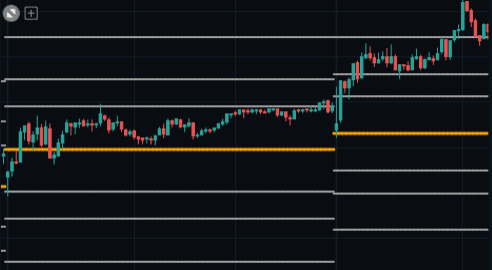Categories
About UsHow to get startedAccount AccessBrokers and TradingScannersResearch ToolsCommunityStocksOptionsFuturesAlertsMobile AppPivot Points - Fibonacci Indicator Formula
Fibonacci Pivot Points offer a slight variation from the standard Pivot Point. They take a standard Pivot Point calculation and multiply it by a corresponding Fibonacci retracement level. Many traders use Pivot Points, Fibonacci ratios and Fibonacci levels and the theory is that prices can naturally gravitate to those levels.
When the price of an asset is above the Pivot Point during the trading day, this is considered to be a bullish sign.
When the price of an asset is below the Pivot Point during the trading day, this is considered to be a bearish sign.
Additionally, there are support and resistance levels that are derived from the Pivot Point and Fibonacci ratios: Support 1 (S1), Support 2 (S2), Support 3 (S3) and Resistance 1 (R1), Resistance 2 (R2), Resistance 3 (R3).
Calculation:
R3 = P + ( High - Low ) * 1.0
R2 = P + ( High - Low ) * 0.618
R1 = P + ( High - Low ) * 0.382
P = ( High + Low + Close ) / 3
S1 = P - ( High - Low ) * 0.382
S2 = P - ( High - Low ) * 0.618
S3 = P - ( High - Low ) * 1.0
The S1, S2, S3 and R1, R2, R3 levels can be used as support and resistance for reversals but can also be used as a continuation of the trend. If an asset's price is rising and moves above R1, it could help signify the uptrend and a continuation to R2 would be possible.
